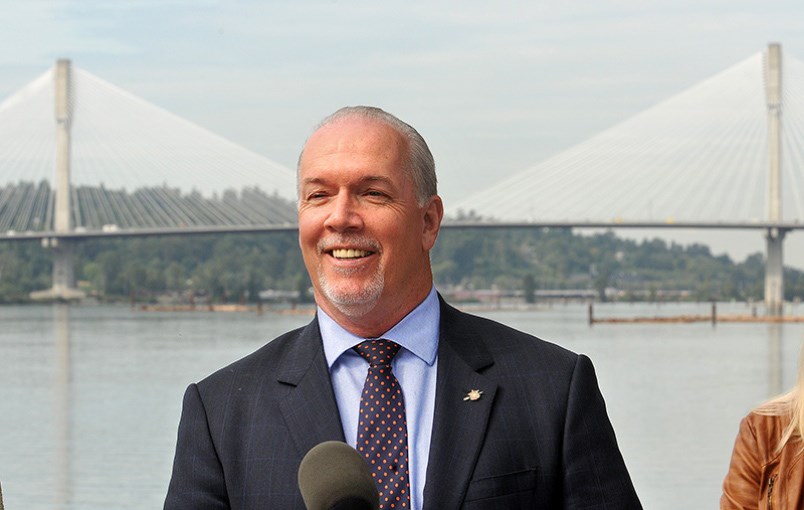The removal of tolls has led to a significant increase in the number of drivers using the Port Mann Bridge.
For example, Friday, Sept. 1 — the day the tolls were eliminated — saw a 28% increase in daily traffic compared to the same weekday in 2016 while Sept. 2 saw a 38% increase, according to data from TI Corp., which oversees the operation of the bridge (see table for complete traffic figures).
But Greg Johnson, a TI spokesperson, said while more drivers have used the Port Mann in the week since the tolls were removed, it’s too early to predict the long-term impacts.
“This is just a snapshot,” Johnson told The Tri-City News Thursday. “We are looking at less than a week of traffic data. It is better to take a longer-term view of it.”
It takes time for traffic to normalize after a major change in the road network, he said, adding that TI Corp. will continue to monitor volumes in the weeks and months ahead.
“These are still early days,” he said. “Motorists will find the best routes for them.”
B.C. Premier John Horgan announced late last month that the provincial government would be eliminating tolls on the Golden Ears and Port Mann bridges during a press conference at Citadel Landing in Port Coquitlam.
Drivers of most cars, pickup trucks and SUVs paid $3.15 for a one-way crossing on the Port Mann while medium-sized vehicles like a car with a trailer paid $6.30. Commercial vehicles were the hardest hit, paying $9.45 per crossing.
Horgan said the removal of tolls would save the average commuter who uses the bridge regularly approximately $1,500 a year while commercial drivers who cross the bridges at least once a day would save approximately $4,500 per year.
“Many people have been traveling out of their way to avoid tolls because they simply cannot afford them,” Horgan said at the press conference. “Getting rid of tolls will shorten commute times and clear up other routes.”
The elimination of tolls could also have an impact on overall traffic volumes, said Dan Mooney, Coquitlam’s manager of transportation.
Without the financial incentive, overall trips may increase, he said, as fewer drivers consider other transit options, carpooling or driving less. In the long term, it is possible that more people will buy a second vehicle, which could lead to an overall rise in the number of vehicle trips throughout the region, Mooney added.
“There is less of an incentive to think about other modes,” he said of the effect of toll removal. “There are going to be those that either didn’t drive, or drove less or carpooled… that are going to travel more.”
Without tolls, Coquitlam expects to see a redistribution in traffic patterns.
For example, Mooney said truck traffic coming out of Surrey to New Westminster’s Braid Street industrial area will likely use Highway 1 instead of the Pattullo Bridge, which could increase westbound pressure on the Brunette interchange.
But he said he expects some decreases in traffic, particularly on Lougheed Highway between the Cape Horn interchange and Coquitlam’s City Centre as fewer trucks and commuters manoeuvre to avoid the toll bridge. A similar decrease is also anticipated for eastbound Highway 1 traffic turning into Coquitlam ahead of the Port Mann Bridge.
Still, Mooney said the Brunette interchange will continue to be a choke point.
“Brunette interchange was one of the few interchanges that was not upgraded [during the Highway 1/Port Mann Bridge Construction Project],” he said. “It didn’t operate well before the [highway upgrades]. It didn’t operate well after.”
He added the city will be monitoring the changes and traffic analysts will have a better understanding of the impacts of the removal of the tolls after six months.
@gmckennaTC



